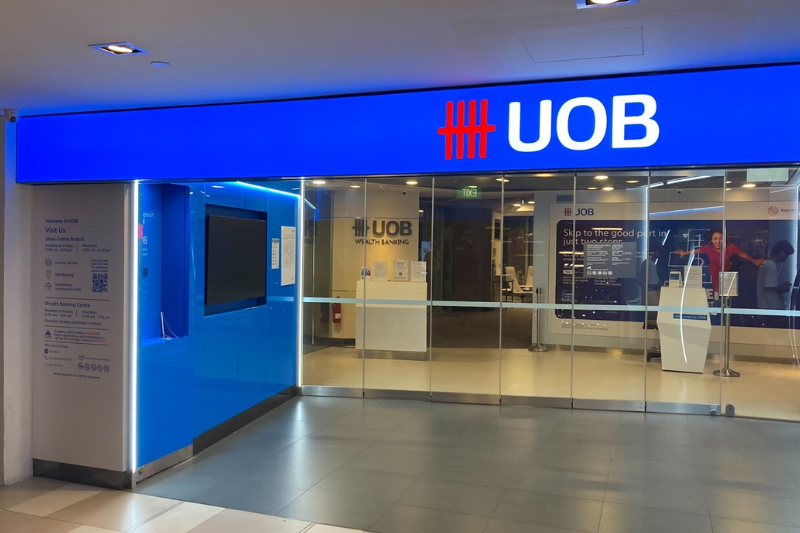UOB Reports Record Net Profit and Raises its Final Dividend to S$0.85: 5 Highlights from the Bank’s 2023 Earnings

After DBS Group (SGX: D05) reported a sparkling set of earnings for 2023, United Overseas Bank Ltd (SGX: U11), or UOB, is next in line to announce its full-year results.
And UOB did not disappoint, either.
The lender saw its core net profit hit a record high as it upped its final dividend to S$0.85.
Here are five highlights from the bank’s latest earnings report.
1. A robust financial performance
For 2023, UOB saw its net interest income (NII) rise 16% year on year to S$9.7 billion, boosted by overall higher interest rates.
Fee and commission income inched up 4% year on year to S$2.2 billion while other non-interest income surged 85% year on year to S$2 billion.
As a result, the lender’s total income climbed 20% year on year to S$13.9 billion.
With operating expenses rising by just 15% year on year, the bank’s operating profit jumped 24% year on year to S$8.2 billion.
UOB’s core net profit came in at S$6.1 billion, surpassing the S$6 billion mark for the first time, and was up 26% year on year.
After deducting S$350 million because of one-time costs from the Citigroup (NYSE: C) acquisition and integration, net profit stood at S$5.7 billion, also a record high.
2. Higher fee income from increased card spending
UOB’s fee income was boosted by higher credit card spending as consumer sentiment remained buoyant.
Credit card fees hit a new high of S$382 million for 2023, up 66% year on year, as UOB expanded its regional franchise.
Over the same period, wealth management fees also picked up, rising by 3.8% year on year to S$595 million on the back of strong net new money inflows of S$22 billion for the year.
The bank’s assets under management from affluent customers grew to S$176 billion, up 14% year on year.
Backed by its Citigroup acquisition, UOB grew its retail customer base past eight million, with one million new-to-bank customers added.
53% of these new customers were acquired digitally.
3. Lower net interest margin with flat loan growth
NII rose for 2023 but the bank’s net interest margin (NIM) continued to slide quarter on quarter as loan margins compressed amid competition for loans.
NIM for the fourth quarter of 2023 (4Q 2023) came in at 2.02%, down 0.2 percentage points from the 2.22% recorded a year ago.
The NIM was also slightly lower than the third quarter’s 2.09% and has been trending lower for the past four quarters.
UOB’s loan book was flat year on year at S$321 billion with currency effects shaving off some growth.
At constant currency, the blue-chip bank’s loans would have grown by 2% year on year.
4. Higher cost-to-income ratio offset by lower non-performing loans ratio
For 4Q 2023, UOB saw its cost-to-income (CIR) ratio rise to 43.2%, up from 42.6% a year ago due to higher staff cost.
That said, for 2023, its CIR improved to 41.5%, down from 43.3% a year ago.
This was achieved even after total expenses rose from S$5 billion to S$5.8 billion as the bank’s total income rose more than the increase in expenses.
UOB’s allowances for credit losses jumped 53% year on year to S$921 million.
To be sure, the lender’s non-performing loans (NPL) ratio dipped from 1.6% in 4Q 2022 to 1.5% in 4Q 2023.
5. Higher dividends
To celebrate its record achievement, UOB upped its final dividend to S$0.85 from S$0.75 a year ago.
In doing so, the bank’s total 2023 dividend rose to S$1.70, up 26% year on year from the S$1.35 paid out a year ago.
The lender’s payout ratio has stayed constant at between 49% to 50% over the past three years.
At a share price of S$29.26, UOB’s shares offer a historical dividend yield of 5.8%.
Get Smart: A bright outlook
CEO Wee Ee Cheong was upbeat about the bank’s prospects.
He is optimistic about ASEAN’s potential although the global economic outlook remains cloudy.
The region will be driven by higher domestic demand, a robust recovery in tourism, and investment inflows into the manufacturing sector.
The bank’s Citigroup integration is completed in Malaysia and Indonesia. Meanwhile, efforts to integrate the acquisition in Thailand and Vietnam are on track for completion in the coming months.
For 2024, the bank expects to record a low single-digit loan growth while fee income is projected to rise by double-digits year on year.
We’ve discovered 5 SGX stocks that not only offer better returns than fixed deposits but also have the potential to beat inflation. Plus, these stocks provide capital growth and can significantly compound your wealth in the long term. If you’re looking to make your money work harder for you, download our FREE report for details on these five stocks.
Follow us on Facebook and Telegram for the latest investing news and analyses!
Disclosure: Royston Yang owns shares of DBS Group.
The post UOB Reports Record Net Profit and Raises its Final Dividend to S$0.85: 5 Highlights from the Bank’s 2023 Earnings appeared first on The Smart Investor.